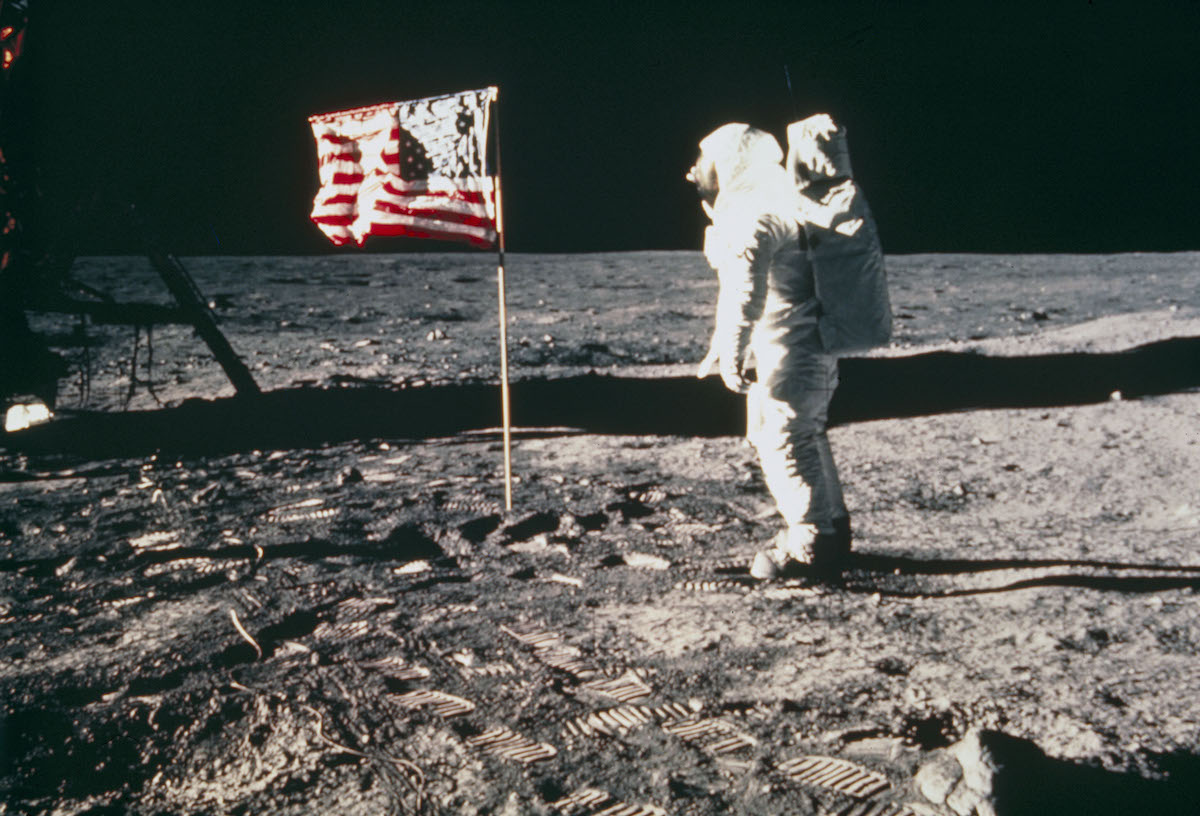
When Neil Armstrong planted an American flag on the moon, the U.S. wasn’t actually staking a claim on the celestial orb. And, thanks to a U.N. treaty, no nation can.
Exactly 49 years ago, on Jan. 27, 1967, the Outer Space Treaty, already adopted by the U.N.’s General Assembly, opened for signature. In the midst of the Cold War, the treaty provided a hopeful moment of international agreement—especially because the U.S. and Russia were among the more than 60 countries to sign it on that first day. The treaty declared that the moon and other “celestial bodies” were “the province of all mankind” and can only be used for peaceful purposes.
Legal questions about outer space had become a pressing issue almost ten years earlier, when Russia successfully launched the first artificial satellite, Sputnik, on Oct. 4, 1957, and propelled the world into the space age. The U.N. went to work immediately, but it took years for the matter to move from a special committee, to a resolution that extended international law and the U.N charter to outer space, to a non-binding declaration on space-age legal principles, and finally—in June 1966—to drafts, from the U.S. and the USSR, for a final treaty.
In Sept. 1966, while the treaty was in discussions, TIME delved into the legal questions at hand. Antarctica was the model, the story explained, as it was the case there that the nations exploring the icy continent had agreed to stake no territorial claims. When it came to the moon, Russia and the U.S. had agreed that no state would claim sovereignty of that or any other celestial bodies. Part of the reason for such “remarkably amicable” negotiations was that the moon would be an expensive and impractical military base, and that, “No one has devised a way to station a traffic cop or patrol vessels to guard the boundaries of some theoretical mare nostrum of space.”
The treaty that was eventually adopted explicitly addresses the issue of ownership of space, stating that there shall be “free access to all areas of celestial bodies” and that outer space “is not subject to national appropriation by claim of sovereignty, by means of use or occupation, or by any other means.” Not only can states not claim ownership of anything in outer space—they even have to allow any other nation access to their installations—but the treaty also extends to the non-governmental entities that, under the aegis of a signatory state, may participate in exploration there.
The treaty also keeps weapons of mass destruction out of orbit, bans military activity in space and asks that states inform the public and scientific community “of the nature, conduct, locations and results” of any outer space activities.
When the U.S. landed the first mission to the moon in 1969, TIME explored “Ground Rules for the Moon,” and noted that the U.S. followed every provision of the treaty—including the sovereignty provisions. “Though Neil Armstrong planted his nation’s flag on the moon,” the story reminded readers, “the gesture was more ceremonial than a claim of sovereignty.”
More Must-Reads from TIME
- Cybersecurity Experts Are Sounding the Alarm on DOGE
- Meet the 2025 Women of the Year
- The Harsh Truth About Disability Inclusion
- Why Do More Young Adults Have Cancer?
- Colman Domingo Leads With Radical Love
- How to Get Better at Doing Things Alone
- Michelle Zauner Stares Down the Darkness
Contact us at letters@time.com